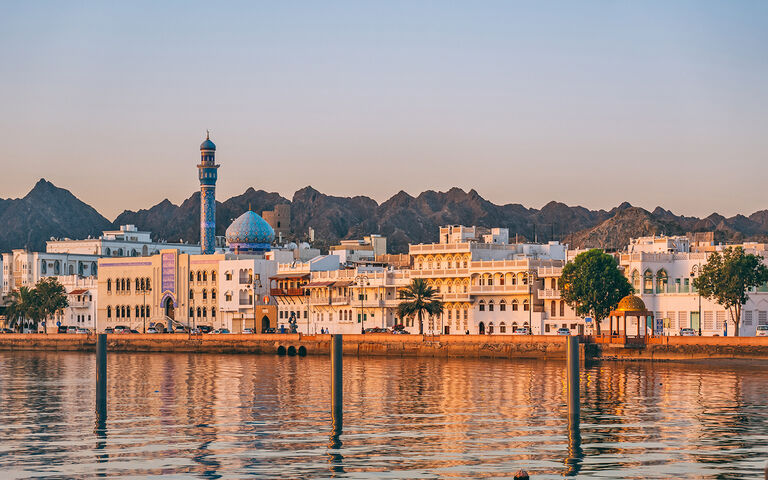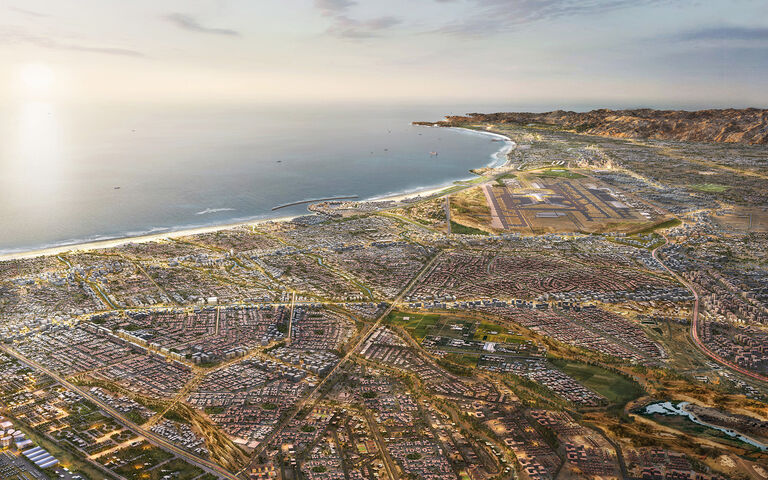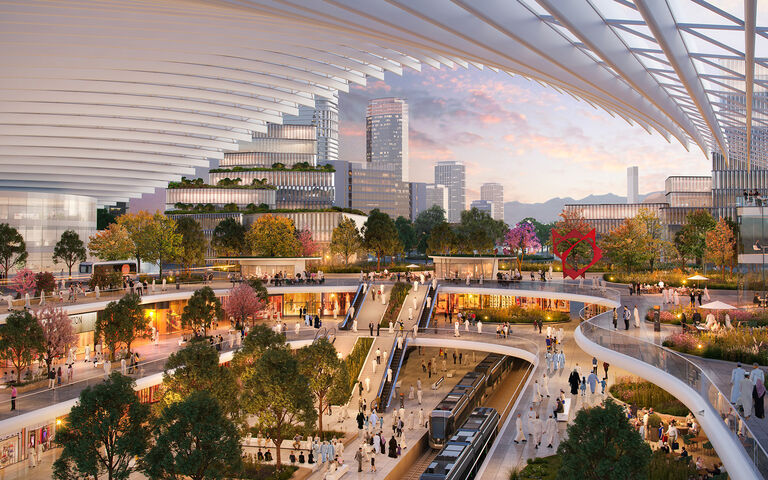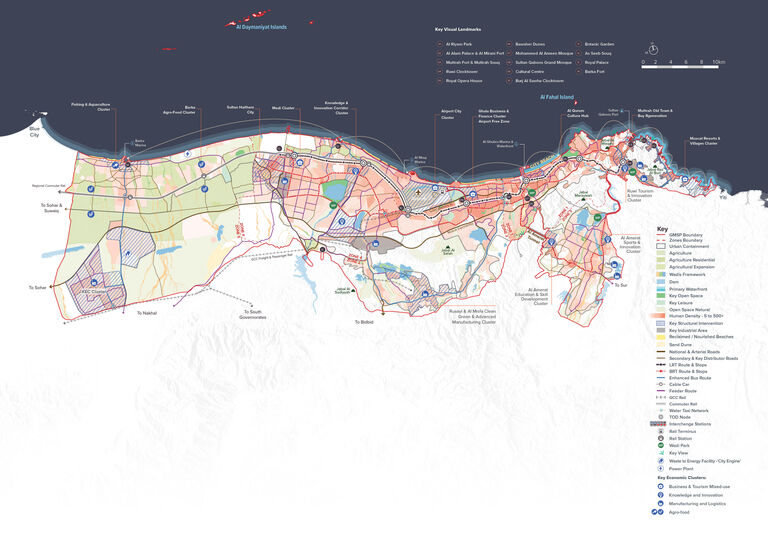The city’s linear sprawl continues to extend westward, driven by the low cost of car ownership and petrol, more affordable land outside the city centre and citizens redeeming their entitlement to birthright land plots. This extensive development often occurs on land vulnerable to the impacts of climate change, emphasising the need for effective governance and resilient solutions.
As part of Oman Vision 2040, the Ministry of Housing and Urban Planning commissioned Broadway Malyan to develop the Muscat Structure Plan. The plan focuses on strengthening governance, guiding future growth and creating resilient, liveable neighbourhoods that align with Oman’s national goal of achieving a net-zero economy by 2050.




